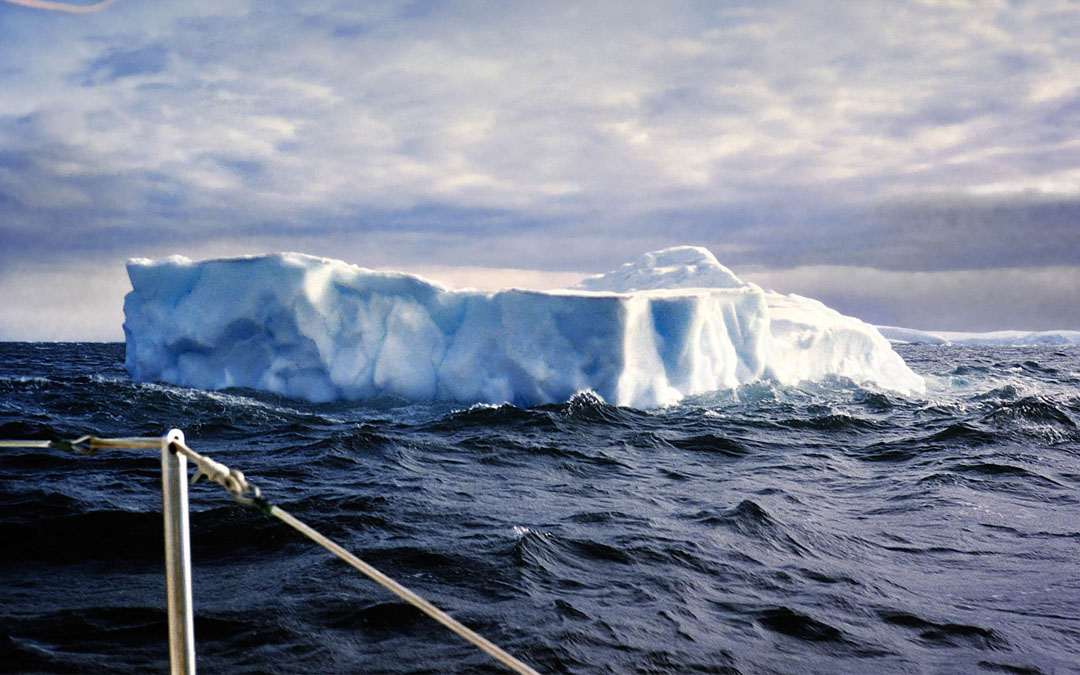
A floating mass of ice rising more than 5 meters above sea level is classified as an iceberg. About 90% of its volume is hidden beneath the water, making it hard to estimate the shape of the submerged part.
Sometimes, the ice extends horizontally underwater, which can touch the hull of a passing ship and cause severe damage.
Great care must be taken to avoid approaching recklessly.
Read this episode on the "White Phantom." page.
After reaching the entrance to Antarctica, Aomi rested for a day and a half at Deception Island before continuing further south toward the continent.
My next destination, the Melchior Islands, was still 200 km away. I checked the charts and sailing directions, but there were no suitable anchorages along the route.
Aomi's average speed is only 4 knots (7.4 km/h) at full power, though she can reach a maximum of 5 knots. Even if everything went smoothly, the journey would still take about 27 hours. In other words, it would be a two-day voyage with one night at sea.
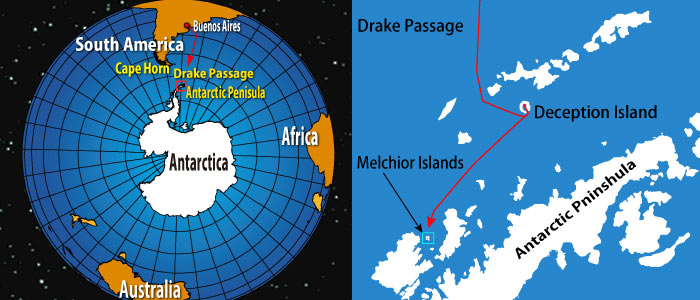
This was a serious problem because it was extremely dangerous to sail in the Antarctic at night, where most areas remained unsurveyed. In the dark, Aomi could run aground on an uncharted reef or collide with an iceberg.
With no safe anchorages along the route, I had no choice but to sail through the night.
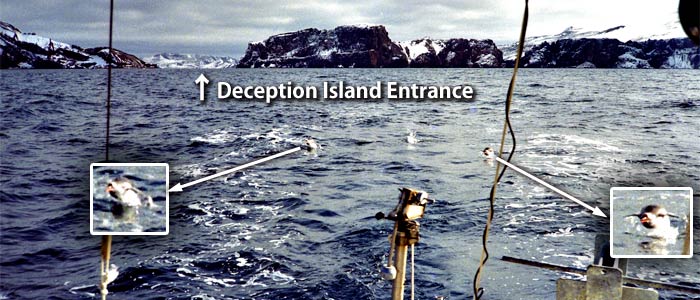
Here’s a photo of Aomi leaving Deception Island. At first, it looked like fish were leaping out of the water, chasing Aomi’s stern. But when I looked through my binoculars, I realized they were penguins with orange beaks—Gentoo penguins.
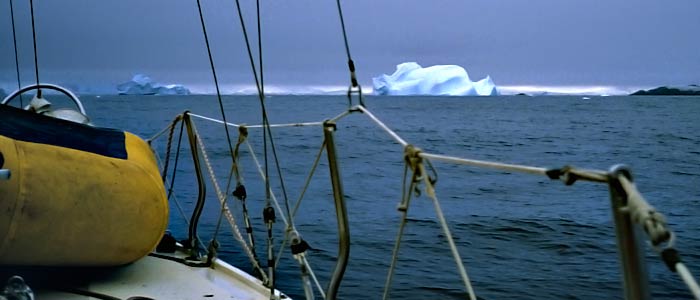
Soon, I came across several icebergs, each with strange shapes. In the photo above, you can see one iceberg, and to the left, there’s another.
*
So, what exactly is an iceberg? Is it just a piece of floating ice, or how big does it have to be? The definition provided by the International Ice Patrol is as follows:
- Growler ----- Height: <1 m , Length: < 5 m
- Bergy Bit ----Height: 1-5 m, Length: 5-15 m
- Small ---------Height: 5-15 m, Length: 15-60 m
- Medium ------Height: 15-45 m, Length: 60-120 m
- Large --------- Height: 45-75m, Length: 120-200m
- Very Large -- Height: >75m , Length: > 200m
From the above, you can see that a block of ice is not called an iceberg unless it is at least 5 meters high. Aomi’s mast stands about 10 meters above the water, so an iceberg must be at least half that height, or about as tall as her spreaders.
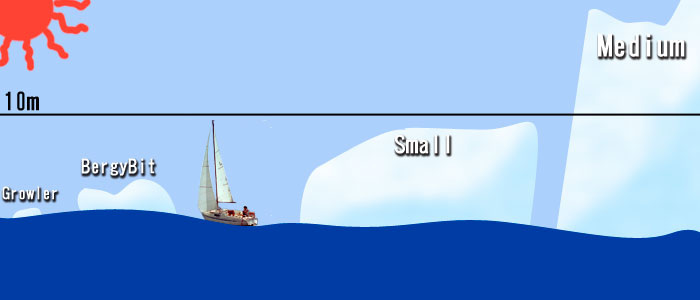
Now, let's look at the classification of icebergs by shape:
- Tabular
- Dome
- Blocky
- Wdge
- Drydock
- Pinnacle
Icebergs are classified into the six categories listed above.
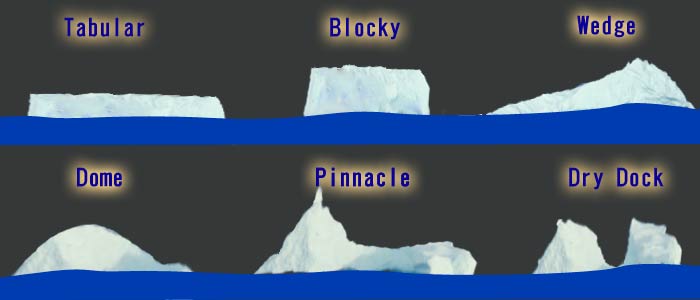
(A drydock iceberg has a U-shaped notch that reaches the water or dips below it, often making it look like two icebergs side by side.)
*
Here, let me ask you a question: What do these icebergs look like beneath the water? The answer is—it's "completely unimaginable."
As you know, 90% of an iceberg's volume is underwater, but it's nearly impossible to guess what it looks like beneath the surface.
The photo below was taken from Aomi, showing a growler floating near the deck. I edited it so that you can't see what lies beneath the water.
Can you imagine what it looks like underneath? Click on the photo after forming a picture in your mind. You have to visualize it first!
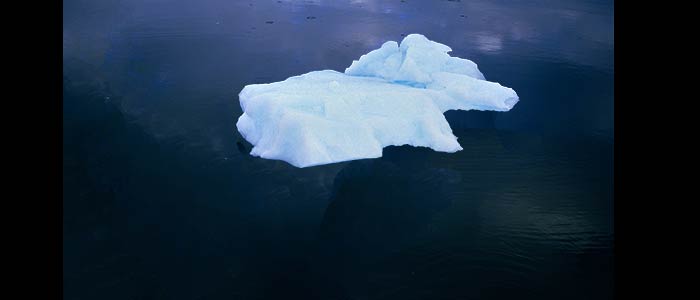
I'm sure you're surprised. If you approach an iceberg without caution, the bottom of your boat could collide with ice extending horizontally underwater.
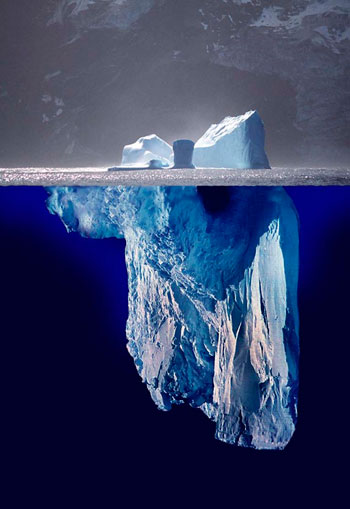
This is a composite image I found online, showing that approaching an iceberg is dangerous not only because the ice extends horizontally underwater. Icebergs are constantly melting—which can cause them to shift and suddenly rotate.
In fact, the iceberg in the image above appears more stable when lying horizontally than when standing vertically. If an iceberg like this were to rotate, small Aomi nearby would be in serious danger.
The background of this page is a photo of snow taken in the Antarctic.